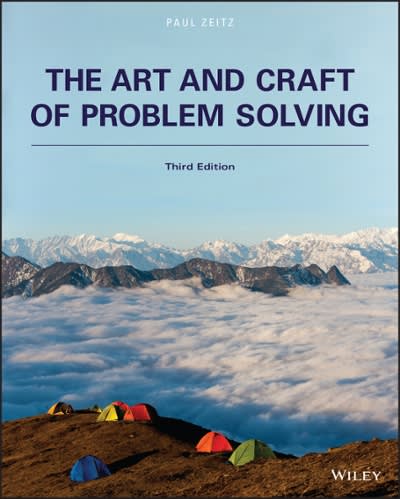Question
Problem 5 [20 marks] In his 1889 publication Natural Inheritance, the renewed British scientist Sir Francis Galton de- scribed a pinball-type board that he called


Problem 5 [20 marks] In his 1889 publication Natural Inheritance, the renewed British scientist Sir Francis Galton de- scribed a pinball-type board that he called a quincunx. ? ??? ???? ????? ?????? ??????? 0 1 2 3 4 5 As pictured, the quincunx has five rows of pegs, the pegs in each row being the same distance apart. At the bottom of the board are six cells, numbered 0 through 5. A ball is introduced at the top of the board and will hit the middle peg in the first row and veer either to the right or to the left, then strike a peg in the second row, again veering to the right or to the left, and so on. (a) If the ball has a 50-50 chance of going either direction each time it hits a peg, what is the probability it ends in cell 0? What about for the other cells? [5 marks] (b) Write a code in Rthat simulates this experiment and run it 1,000 times, recording the number of times the ball lands on each cell. Compare the frequencies with the theoretical probabilities derived in part (a). [5 marks] (c) Suppose now that the quincunx is enlarged to have 100 rows. Derive the probabilities of landing on cells 0, 1, 2, . . . , 100? [5 marks]
(d) Update your code to run this experiment and run it 1,000 times. Compare the frequencies with the theoretical probabilities derived in part (c). [5 marks]


Step by Step Solution
There are 3 Steps involved in it
Step: 1

Get Instant Access to Expert-Tailored Solutions
See step-by-step solutions with expert insights and AI powered tools for academic success
Step: 2

Step: 3

Ace Your Homework with AI
Get the answers you need in no time with our AI-driven, step-by-step assistance
Get Started


